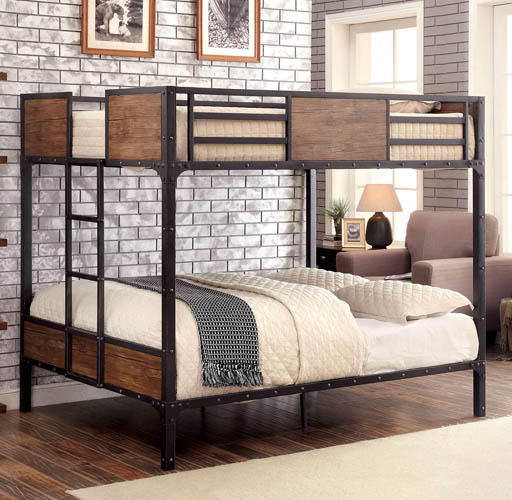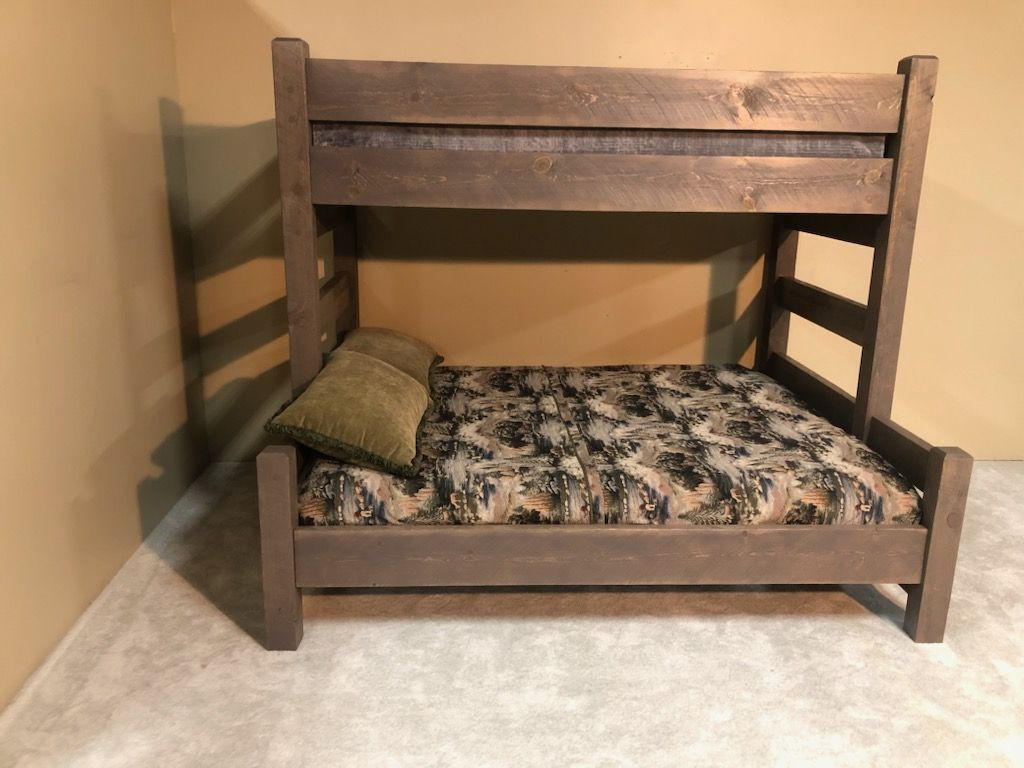Creating Functional Shared Spaces with Adult Bunk Beds
Posted by UPW on Aug 1st 2024
From co-living communities to multifamily homes, shared spaces have become a hallmark of contemporary living. This trend has gained momentum over the years, reflecting a growing preference for versatile and adaptive living environments. Central to this transformation are adult bunk beds, which provide a practical yet stylish solution for multi-use spaces. But what makes these beds so effective in optimizing shared settings?
Defining Shared Spaces in Modern Living
Shared living spaces have traditionally been organized with clear separations: living rooms for relaxation, dining areas for meals, and kitchens for cooking. However, modern design trends have blurred these distinctions, fostering multifunctional areas that cater to diverse activities within the same space. In environments such as hostels and summer camps, space-efficient furniture like bunk beds becomes particularly crucial, enabling these areas to serve multiple purposes—from sleeping quarters to social hubs—within limited square footage.
The Role of Adult Bunk Beds in Shared Space Design
As living spaces evolve, the design of adult bunk beds plays a pivotal role in the architecture of shared residential and commercial environments. Tailoring these designs to specific user needs is crucial in optimizing both the utility and appeal of shared areas. How do we adapt these designs to meet diverse requirements, and in which specific scenarios do these adaptations become necessary?
Tailoring Design to User Needs
The customization of adult bunk beds is essential for maximizing the functionality and style of shared living spaces. Here's how specific design adaptations make these beds ideal for a variety of settings:
- Adjustable Height Settings: Adjustable features cater to different ceiling heights and personal preferences, ensuring comfort without compromising on space. For instance, in loft-style apartments with high ceilings, taller bunk configurations can maximize vertical space effectively.
- Modular Design Flexibility: Modular designs allow for adding or removing elements like storage drawers or desks, making it easy to adapt to the changing needs of users. This flexibility is particularly valuable in environments like hostels or dormitories, where each occupant's functionality needs vary.
- Configurable Layout Options: The ability to alter the layout of the bunk bed setups, such as reversing the ladder or switching the side of the desk, provides customization to fit different room shapes and sizes. This adaptability is crucial in optimizing space in small apartments or shared children's bedrooms.
- Contextual Placement: The Gary Full XL over Queen Bunk Bed is an example of a product designed for varied living scenarios. Its robust frame supports heavier weight capacities suitable for adult use, while its aesthetic design fits well in settings from upscale rental properties to family homes, providing a practical solution without sacrificing the room's visual appeal.
These tailored design features ensure that adult bunk beds can transform any shared space into a multifunctional environment that is both comfortable and stylish. Whether enhancing a boutique hostel or optimizing a small family apartment, these beds offer a dynamic solution that adapts to both the aesthetic and functional demands of modern living.
Practical Layouts with Adult Bunk Beds
The strategic arrangement of adult bunk beds within shared spaces is crucial for achieving a balance between private and communal living. Proper placement not only enhances the functionality of the room but also maintains aesthetic coherence, fostering an environment that supports both individual privacy and social interaction. Here’s how the right room arrangement strategies can transform shared living spaces into well-organized, efficient, and welcoming environments.
Room Arrangement Strategies
Crafting practical and pleasant shared spaces with adult bunk beds involves thoughtful consideration of layout and design:
- Zone Definition: Designate specific areas for sleep, work, and relaxation by arranging bunk beds to naturally segment the room. This can create visual and physical boundaries that help define the usage of each area without the need for structural modifications.
- Flow Optimization: Position beds to enhance the natural flow of the room. Placing bunk beds against walls maximizes central open space, facilitating easier movement and interaction between the areas used for different activities.
- Visibility and Accessibility: Arrange bunk beds to maintain visibility across the room and provide easy access to each bed. This is particularly important in settings like hostels or shared bedrooms, where ease of access can significantly enhance the user experience.
- Enhanced Privacy: Utilize strategic placement such as back-to-back or L-shaped configurations to increase privacy for each occupant without additional partitions or curtains.
These strategies are instrumental in transforming shared spaces into functional, organized, and aesthetically pleasing environments. They ensure that each individual can enjoy personal space while still benefiting from the communal aspects of shared living.
Seamlessly Integrating Common Areas
Integrating common areas with adult bunk beds is an art that enhances the functionality and social dynamics of shared spaces. By placing interactive and communal facilities such as lounges, study nooks, or entertainment areas adjacent to or near the bunk beds, spaces become more cohesive and dynamic.
For example, including a loft bed in the common area can offer an elevated private retreat while still keeping the individual connected to the communal vibe. This setup fosters a blend of private and communal activities, allowing inhabitants to transition seamlessly between social interaction and personal downtime. The proximity of these areas encourages spontaneous social interactions, which can strengthen community bonds and enhance the shared living experience.
Enhancing Functionality Through Innovative Features
In today's design landscape, the functionality of furniture is paramount, particularly in shared spaces where efficiency and space optimization are crucial. Adult bunk beds exemplify this principle by integrating innovative features that extend their utility beyond mere sleeping quarters. These enhancements not only streamline the living environment but also enrich the lifestyle of those who use them, offering a blend of comfort, convenience, and style in multi-user settings.
Built-in Storage Solutions
Adult bunk beds are ingeniously designed with built-in storage solutions to tackle the challenge of limited space in shared environments. These beds often include under-bed drawers, side storage units, or overhead compartments, which provide substantial space to store linens, clothing, and personal items.
This integrated storage capability is crucial for maintaining a clean and organized living space, allowing residents to keep their belongings neatly stowed away yet easily accessible. By incorporating these storage features directly into the bed design, the need for additional furniture is reduced, freeing up floor space for other uses and enhancing the overall functionality of the room.
Multifunctional Components
Adult bunk beds transcend traditional boundaries by incorporating desks, seating areas, and even workout stations, transforming each bed into a comprehensive lifestyle hub. This versatility is exemplified in designs like futon bunk beds, combining a comfortable sleeping area with a convertible futon seating below.
This feature enables the bed to switch between a sleep area and a lounge or guest bed, offering a practical solution for daytime use and occasional hosting. This versatility is particularly valuable in settings like studio apartments or dorm rooms.
Adapting Bunk Beds for Adult Use in Shared Environments
Adult bunk beds are designed not only to save space but also to offer robust, long-lasting comfort and accessibility. The use of high-quality materials and thoughtful design ensures that these beds can stand up to the demands of everyday adult use while providing a practical, comfortable sleeping solution.
Durable Materials for Longevity
For adult bunk beds, longevity is paramount. These beds are crafted from high-grade materials like solid hardwoods—including oak and maple—or reinforced metals, which ensure structural integrity over extended periods. Chosen for their robustness, these materials withstand the rigors of frequent use and are capable of supporting significant weight.
Impressively, many adult bunk beds are designed to hold up to 2,000 lbs., accommodating heavier weights typically associated with adult use. This robust construction makes these beds a sound investment for environments like shared apartments, hostels, or guest houses, where the furniture must endure constant use and provide reliable performance year after year.
Design Features Promoting Accessibility and Comfort
When it comes to adult bunk beds, ease of access and comfort are non-negotiable. These beds are equipped with features that enhance user experience, catering specifically to adult needs. Sturdy ladders or even staircases replace traditional flimsy bunk bed ladders to provide secure and comfortable access to upper bunks.
Ergonomic designs ensure that the frames support healthy posture, whether sitting or sleeping. Additionally, enhanced safety rails are included to offer ample security without compromising the ease of entry and exit from the bed. These thoughtful design choices not only improve the functionality of bunk beds in shared environments but also ensure that they can be used safely and comfortably by adults.
Curious about how these beds can enhance your space? Check out our selection at Just Bunk Beds or get in touch for expert advice on choosing the right model for your needs.





